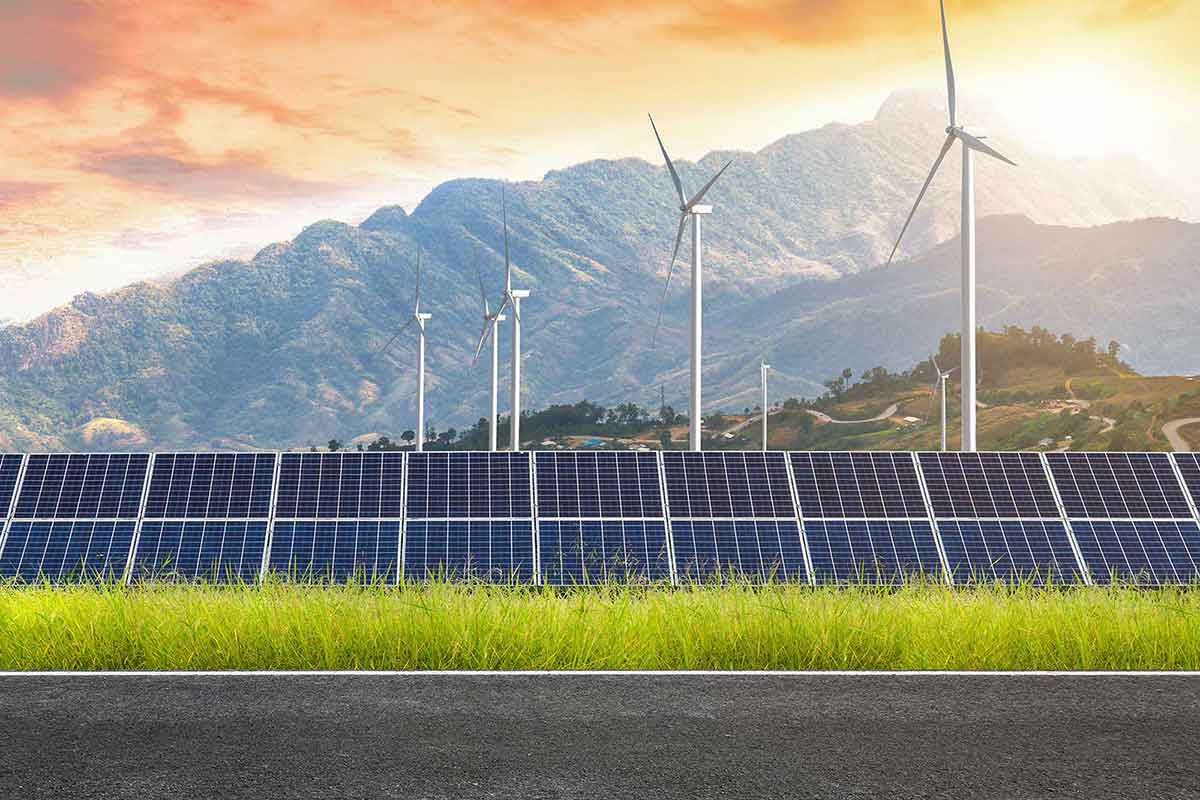Technology that aids sustainability needs immediate green intervention. Here’s how you can help.
Businesses are constantly innovating towards a better tomorrow—to compete, win customers, and expand into new territories. However, to exist and grow in tomorrow’s world, organizations must adopt sustainability. Technology has played a pivotal role to ease the adoption of sustainability through the digitalization of value chains. However, the proliferation of technology latently contributes to the carbon footprint. That carbon contribution is the unnoticed problem we need to fix.
Zoho Corp CEO Sridhar Vembu, in an interview on CXO Talk, breaks sustainability into two dimensions. The first one is the green dimension, where he cites an example of Zoho Corporation’s offices predominantly being powered by renewable sources to promote sustainability. The second dimension is to move corporate facilities to smaller towns where the office commute and the personal consumption of resources decreases.
Technology is omnipresent today. It is evident in our mobile devices; in the apps we use to book services, purchase goods, and gain knowledge; and for various purposes in the organizations we work for. When documents are digitized, we might feel an ounce of eco-friendliness resulted from the process. However, the IT industry might account for up to 3.9% of the Earth’s carbon emissions. The High-Performance Computing (HPC) sector, which includes artificial intelligence (AI), machine learning (ML), and blockchain technologies, was valued at USD 37.8 billion in 2020, which is growing at a phenomenal compound annual growth rate (CAGR) of 5.5% and is predicted to become a USD 49.4 billion industry by 2025. A University of Massachusetts study found that training AI models for natural language processing (NLP) can generate carbon emissions equivalent to 300 round-trip flights between New York and San Francisco. These compute-intensive technologies may have hazardous environmental repercussions.
While some of the tech organizations have begun to opt for green energy sources to combat carbon emissions, the industry is still primarily fossil-fuel driven. For every action on the internet, there are data centers and a web of optic cables working in tandem, including new-age warehouses and data centers that constitute almost 33% of the information and communication technology (ICT) industry’s carbon emissions.
There’s a lot of discussion around sustainability in industries that produce tangible goods and services, such as food, beverages, and other fast-moving consumer goods; fashion; hospitality; and manufacturing industries. But what about propagating eco-friendliness in the largely intangible IT industry?
There been a massive adoption of automation in various tech fields. Fostered by digitalization, some of these actions are attributed to sustainability. Digitalization is often associated with eco-friendliness due to the ability of an advanced digital device to perform innumerable chores that supersedes a multitude of tedious manual processes.
To put things into perspective, the fashion industry has been able to achieve profits through AI-based tools that facilitate virtual fittings for customers. As a result, the carbon footprint can be curbed by 40% through the use of AI. While AI reduces carbon emissions through increased efficiency in inventory management, AI itself has an environmental impact. As the fashion industry aims to adopt a circular economy, the ignorance of AI’s contribution to carbon emissions hinders the goals of sustainability the industry wants to achieve, since the energy consumed by the AI-based system might be obtained from a non-renewable source.
Achieving sustainability is like a game of whack-a-mole. Although they aid sustainability, AI-based systems process large amounts of data that requires immense amounts of energy to power data centers. As we previously saw, the comparison of emissions generated by the training of AI models to the magnitude of the aviation industry’s greenhouse gas emissions compels us to take action towards IT sustainability. Google has emerged as a leader in this aspect, the company was the first to go carbon neutral in 2007 by committing to utilizing renewable energy sources.
We have seen how far IT has come along when HPC aids sustainability, while we have also uncovered the silent problem of how the IT industry contributes to the carbon footprint. However, the good news is that this can be rectified if organizations collectively start implementing changes to adopt a sustainable approach.
Sustainability can be achieved within an organization with the help of the following steps:
-
Internal audit – With the help of surveys, evaluate the current processes followed across the value chain to check for any unsustainable practices that may contribute to the carbon footprint. For example, assess the source of power, turn off unused appliances, and optimize data centers.
-
Green upgrades – Track the consumption of resources across the organization. This can also include upgrades that range from the utilization of energy-efficient equipment to implementing eco-friendly software within the organization.
-
Green power sources – Look for renewable sources of energy that can power the company. A few companies are strategically located close to power plants that supply renewable energy, and some can even install solar power units within their premises. Location is key since renewable energy sources are not available in abundance yet.
-
Operational efficiency – Data centers must be managed efficiently to consume less storage and power. Operational efficiency of data centers can be achieved through the identification of suitable data center management software that helps with the timely analysis of bottlenecks, performance, and organization of data to ensure optimum usage.
-
Data center temperature monitoring – Maintain a cool ambiance in your data centers to offset the heat the data centers generate. Maintaining a cool environment also involves electricity consumption. Smart temperature control devices must be placed to monitor the temperature. Using temperature sensors, the cooling devices can be turned on or off depending on the desired temperature level to be maintained. For example, the data center might be situated in a place with suitable weather conditions and where the more common challenge of maintaining a cool environment is typically not a concern. These data centers will require temperature control systems only during hotter seasons or when the ambient temperature increases; this can be ascertained through sensors.
The responsibility does not stop here. Consider the example of ordering food through a delivery app that has glitches. It is going to consume more battery, and might even cause the phone to crash or hang. If the app has fewer glitches, the energy consumption could be far less. It’s evident that tech companies should roll out sustainable software upgrades to their users to guarantee the performance of the device and help curb device obsolescence or slowdowns. A recent study predicted that if the unsustainable trends in the IT industry continue at the current rate, the industry will constitute 14% of the global carbon emissions by 2040.
To extend sustainability to users, the following can be performed:
-
Green coding – This refers to programming codes written to produce algorithms that reduce energy consumption during the use of the software. Green coding should result in the simplification of processes to increase efficiency at the user’s end. This can reduce glitches, processing time, and energy consumption through superior performance.
-
Reduction of device obsolescence – This is deploying software upgrades that do not make devices obsolete due to slowdown and increased consumption of memory.
-
Customer reviews analysis – Customer reviews can be analyzed to find any hidden sustainability problems. For example, a customer review might talk about increased battery consumption due to a software upgrade in their device. This can mean that the software upgrade is not eco-friendly.
-
Customer education – How many times have we heard people say they never shut down their laptops? Customers often feel that they aren’t directly responsible for maintaining sustainability until they are made aware of the alarming impact of individual actions. Make customers environmentally conscious through all communication touchpoints to help them on their journey to eco-friendliness.
On the path to a net-zero environment, software giants like Microsoft, Google, and Infosys now account for every action they perform towards achieving a sustainable future. While Zoho Corporation powers its Indian offices with a 5MV solar power plant, its IT management division, ManageEngine has set up “Zoho Farms” near Austin, Texas. Through this innovative effort to curb carbon consumption, employees can work from the Wi-Fi enabled farmhouse as well as step outside to harvest crops for themselves and their families. Excess produce from the farm is contributed to a local food bank. Infosys claims that it is already 30 years ahead of the climate change target set by the Paris Agreement, and have been able to exceed the targets by optimizing energy sources and using renewable energy solar panels set up in its offices. It is important to keep in mind that in this continuous cycle of consuming and releasing energy, we need to immediately make green interventions for a cleaner tomorrow.







